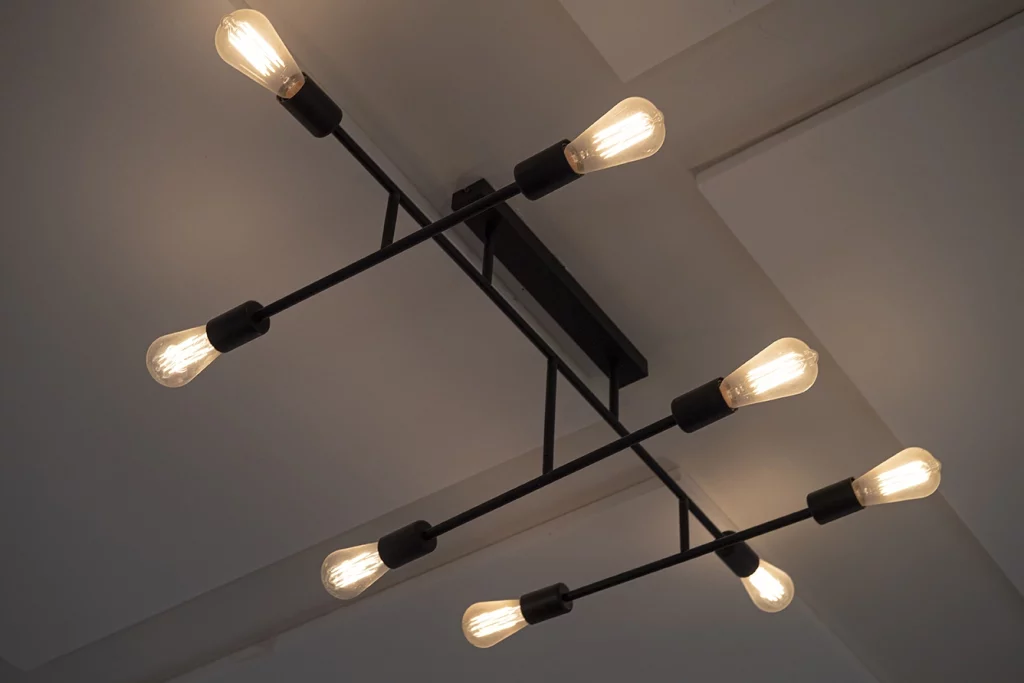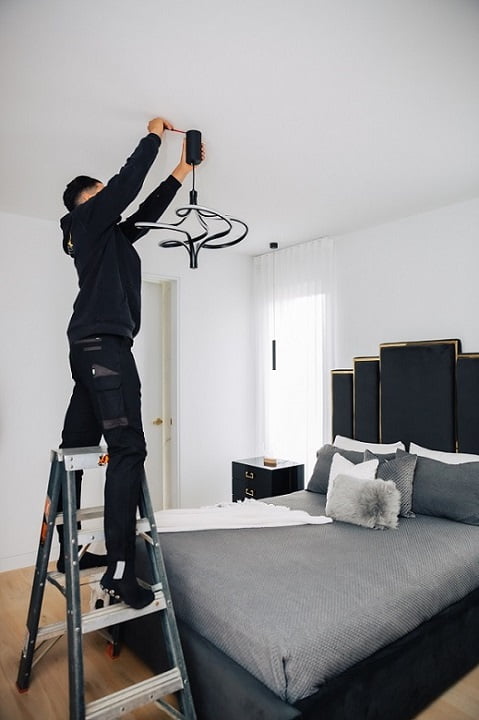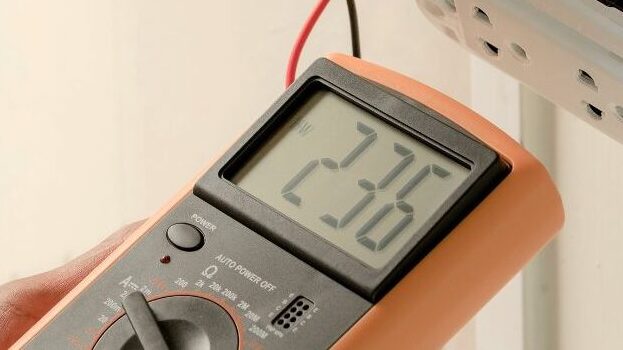Discover the Key Reasons Behind Your LED Light’s Unforeseen Dimming
Immediate Solutions:
If you’ve noticed that your LED light has unexpectedly dimmed, the primary culprits are often related to a voltage issue, circuit overload, excessive heat, poor connections, or even the use of substandard LED bulbs. Scroll down for comprehensive guidance on how to effectively address this issue.
Identify the Top 5 Reasons for LED Light Dimming and Effective Remedies
LED lights are renowned for their impressive longevity, often marketed to last several years. Yet, many fail to endure even a single season. Whether you’re dealing with kitchen downlights, decorative garden lights, or festive Christmas LED lights, experiencing sudden dimming can be both bewildering and common. This extensive guide delves into the primary factors contributing to LED dimming and offers safe, effective troubleshooting strategies to rejuvenate your lighting back to its full radiance.

1. Understanding How Voltage Drops Lead to Unexpected Dimming in LEDs
The most prevalent cause of LED lights dimming unexpectedly is a voltage drop. When the voltage supplied to the light fixture falls below the necessary threshold, you will notice a significant decrease in brightness. What factors contribute to this issue?
- Temporary fluctuations within the power grid
- Local circuits that are experiencing overloads
- Long wiring runs using inadequate, thin cables
- Malfunctioning switchboards or poor connections
Voltage drops can present considerable challenges, especially with budget LED lights that typically lack adequate voltage regulation and are more sensitive to even minor voltage fluctuations. To ensure the effectiveness of your lighting solutions, always consider upgrading to high-quality products that can handle these variations.
Also Read: 10 Ways to Save On Power and Energy Costs
2. How to Detect Overloaded Circuits in Older Residences
Overloading your electrical circuits by connecting too many devices or appliances can put significant stress on your power supply. When a circuit struggles to meet the demand, the voltage becomes unevenly distributed among devices, which leads to dimmed lights, especially concerning sensitive LEDs. This issue is particularly prevalent in older homes constructed before the advent of modern energy-intensive technologies. Signs of overloaded circuits often include:
- Flickering lights
- Buzzing switches
- Dimmed lights, particularly in affordable LEDs that may lack necessary protective features.
Schedule a Quote and Inquire About Our FREE Electrical Inspections
3. How to Fix Loose Connections and Address Damaged Wiring
Inadequate power delivery can often result from loose fittings or aging wiring. If your light flickers or dims when you adjust a switch or device, this may indicate loose connections. Here are essential areas to inspect:
- Ensure the bulb is firmly seated in its socket
- Watch for flickering at the wall switch
- Inspect for burn marks, discoloration, or unusual buzzing sounds
Important Note: Many low-cost LED lights utilize thin or inferior quality internal wiring, making them more susceptible to failure due to heat or physical movement. Regular inspections and maintenance can prevent unexpected complications.
Also Read: Keep Your Pets Safe Around Electricity
4. Understanding the Risks of Overheating in LED Lights
While LEDs generate less heat compared to traditional incandescent bulbs, they still require efficient heat dissipation to function optimally. If an LED overheats, it will automatically dim as a protective measure. Several factors can contribute to overheating:
- Enclosed light fittings that restrict airflow
- Defective heat sinks, particularly in budget models
- Excessively high ambient temperatures
- Insufficient air circulation around the fixture
If your LED housing feels hot to the touch, it is likely experiencing overheating issues. This problem is especially common with inexpensive, poorly ventilated LED downlights or garden lights installed in direct sunlight without adequate thermal protection.

5. Understanding Lumen Depreciation and Its Impact on LED Brightness Over Time
Even high-quality LEDs will gradually decrease in brightness over extended periods of use, a phenomenon known as lumen depreciation. Quality LEDs can maintain approximately 70% to 90% of their brightness after roughly 50,000 hours of use. In contrast, cheap LED products may start to fade after just 5,000 to 10,000 hours, often doing so inconsistently. If your light appears to be:
- A budget model, it may simply be nearing the end of its operational lifespan.
- Several years old and frequently utilized
- Subject to constant usage
Why Do Inexpensive LED Lights Fail Prematurely?
During festive seasons, inexpensive LED lights flood the market, available in many forms, such as string lights, downlights, garden features, and more. The potential risks associated with these products include:
- Inconsistent voltage tolerance: making them prone to dimming and flickering
- Poor heat management: increasing the likelihood of overheating
- Low-quality drivers: which fail to effectively regulate electrical current
- Lack of weatherproofing: rendering them unsuitable for outdoor use
Holiday Tip: When purchasing LED Christmas lights, ensure that they feature:
- IP65+ waterproof rating
- Certification compliance marks (e.g., RCM)
- Reputable brands (steer clear of lesser-known bargain brands)
While opting for cheaper lights may save you money upfront, they can result in higher costs in terms of replacements, safety, and long-term frustration.
Effective Strategies to Resolve Dim LED Lights
Examine for Loose Connections and Signs of Overheating
Begin by thoroughly inspecting your light fixture. Is the bulb securely fastened? Are there any visible signs of fraying, corrosion, or damage? If you discover anything out of the ordinary, do not attempt to repair it yourself, particularly if wires are exposed or if the fixture appears burnt or melted. Gently touch the fixture; if it feels excessively hot—think “hot enough to cook an egg”—that is a significant warning sign. Overheating fixtures can pose serious hazards and often necessitate replacement.
Need help? We are Beacon Lighting Recommended Electricians, and installing and replacing LED fittings is our area of expertise. Whether you’re located in Braybrook, Yarraville, or nearby, Electrx can address the issue safely and efficiently.
Utilize a Multimeter to Measure Voltage Levels
If your LED is dim due to insufficient voltage, using a multimeter will assist in pinpointing the problem. Testing the voltage at your LED fixture will reveal whether your lights are receiving the correct power supply. Compare the voltage measurements with the recommended voltage for your specific LED lights. If the voltage is lower than required, this could explain the dimming. If the voltage consistently falls short, you may be facing a more significant electrical issue and should reach out to a qualified electrician for further investigation.
If you find low voltage across multiple fittings, there is likely a larger wiring or switchboard issue at play.

Review the Dimmer Switch Settings
We often receive inquiries such as:
“Why is my light dim?”
Us: “Do you have a dimmer switch?”
Them: “…oh.”
Ensure that no unintended adjustments have been made to the dimmer, or check for compatibility issues with your LED model.
Test the Circuit by Turning Off Other Appliances
Try turning off other devices connected to the same circuit as your LED lights. If your lights become brighter, you are likely dealing with an overloaded circuit. Consider implementing the following steps:
- Redistributing devices to different circuits to balance the load
- Upgrading your switchboard to enhance performance
- Replacing budget LEDs with more efficient models
Also Read: Electrical Upgrades For Your Office
Replace the LED Bulb if Necessary
If none of the aforementioned solutions rectify the issue, your LED may simply be approaching the end of its lifespan. Test this by swapping it out with another LED bulb from your home. If the replacement bulb restores full brightness, the original bulb was likely due for retirement. In that case, proceed to purchase a new LED bulb. However, if changing bulbs does not resolve the issue, the root cause likely lies elsewhere.
Critical Insights on LED Dimming Challenges
So, what caused your LED light to dim suddenly? Potential culprits could include:
- Voltage drops impairing performance
- Loose connections disrupting power flow
- Heat accumulation affecting functionality
- Circuit overload due to too many devices
- Or the LED itself—especially if it is a budget model
With this guide, you are now well-informed about what to check—and how to rectify the situation.
However, if you are uncertain or notice any signs of damage, never compromise on electrical safety.
Let Electrx Provide Expert Assistance
We are licensed electricians and recognized installers for Beacon Lighting. Our services include:
- Testing and replacing LEDs to ensure safety
- Circuit diagnosis to identify and resolve issues
- Solutions for overload and overheating challenges
- Safe, long-lasting electrical upgrades for your home
If you have any uncertainties regarding electrical concerns, it is always prudent to consult a professional electrician, like Electrx Electricians. Contact us today for expert assistance.

Common Questions About LED Troubleshooting
Q: Why is my new LED bulb already dim?
A: This could be due to a voltage drop, faulty wiring, or a low-quality LED that lacks sufficient voltage regulation. Consider replacing it with a high-quality LED first to see if that resolves the issue.
Q: Do inexpensive LED lights dim more quickly?
A: Absolutely. Budget LEDs often lack adequate heat sinks and stable drivers, leading to premature lumen loss, flickering, and dimming—especially in hot or outdoor environments.
Q: Why do my Christmas lights flicker and fade?
A: Seasonal LED string lights are frequently made using lower-grade components. Environmental exposure, overuse, and power surges can all lead to dimming. Always choose outdoor-rated, certified lighting for durability.
Q: Can I resolve dimming LED lights on my own?
A: You can troubleshoot by checking fittings, measuring voltage levels, and replacing the bulb. However, if the issue persists—particularly across multiple fittings—reach out to a licensed electrician for professional help.
The Article: LED Light Dim? Discover the Reasons Behind It first appeared on https://writebuff.com
The Article LED Light Dim: Uncover the Causes of Dimming Issues Was Found On https://limitsofstrategy.com


This exploration into the reasons behind LED dimming is a topic that resonates with many of us who rely on these lights for both functionality and ambience. Having dealt with sudden dimming in my own home, I found it particularly frustrating, especially given the investment in quality bulbs. Your mention of poor connections struck a chord for me; I had a similar issue where a loose connection was the culprit, and it was an easy fix once I realized what was happening.
It’s fascinating to dive into the intricacies of something as seemingly simple as LED lights, a technology that has significantly changed the way we illuminate our lives. Your examination of the reasons behind dimming resonates deeply, especially since many of us have probably experienced that perplexing moment when our favorite lights fail to shine at their full brilliance.